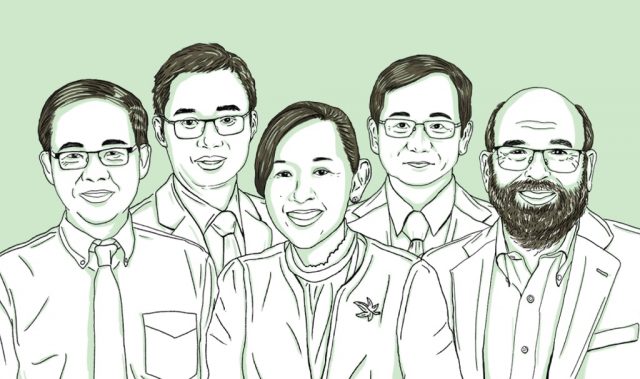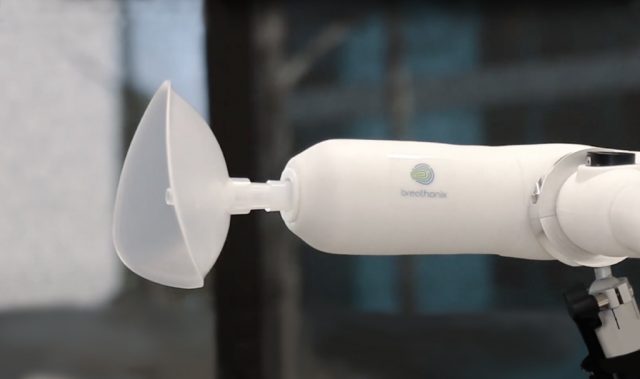
AsianScientist (Jan. 18, 2021) – As days get colder and nights become longer across the Northern hemisphere, winter is in full swing—and so is the dreaded flu season. Because cases regularly spike during colder months, flu has become a familiar threat, but it is no less formidable. According to the World Health Organization, annual epidemics of the flu are estimated to result in up to five million cases of severe illness and about 650,000 deaths.
This year, many countries are now contending with the unexpected double threat of flu and COVID-19—an unsettling prospect for health experts. In parts of the world still dealing with a surge in coronavirus cases, an influx of flu and other respiratory infections could push already-strained hospitals to the breaking point.
To make things even more complicated, the two infections share similar symptoms. From fever and fatigue to sore throat and shortness of breath, it can be difficult for patients and physicians alike to distinguish between flu and COVID-19 based on symptoms alone. Given that the slightest sniffle could now be cause for alarm, diagnostic kits that can simultaneously test for the two infections—also called syndromic panels—are needed more than ever. Heeding the call once more for disease testing is MiRXES, with our new Fortitude SARS-CoV-2 and flu A/B test.
Same but different
While flu and COVID-19 have many symptoms in common, the two diseases are caused by different viruses. Flu, for instance, is primarily caused by influenzavirus types A and B. Meanwhile, the coronavirus SARS-CoV-2 is the culprit behind COVID-19. A shared characteristic of the two viruses, however, is that both are single-stranded RNA viruses. With MiRXES’ proven expertise in detecting, amplifying and quantifying RNA, it seemed only fitting for our company to fight both microbial foes through technology.
After all, it’s something that we’ve done before, as the manufacturers of the Fortitude diagnostic kit developed by the Agency of Science, Technology and Research (A*STAR) and Tan Tock Seng Hospital. To date, millions of Fortitude kits have been deployed to places as far as the United States and Panama. By combining assays for major influenza types with the tried-and-tested COVID-19 diagnostic, the new Fortitude SARS-CoV-2 and flu A/B test is a natural extension of the earlier Fortitude kit.
Like its predecessor, the combined test relies upon a process called reverse transcription-quantitative polymerase chain reaction (RT-qPCR). As flu and COVID-19 are caused by RNA viruses, the technique uses distinct primers to convert the different kinds viral RNA into DNA through reverse transcription. The DNA is subsequently amplified and detected through qPCR. The addition of probes specific to influenza A, B as well as SARS-CoV-2 then make it possible for the machine to distinguish between each kind of virus.
Reminiscent of the first Fortitude kit’s development process, the specific primers and probes as well as certain assays were provided by A*STAR. It then fell upon MiRXES to ensure that the given components were truly specific to each virus and reduce the possibility of false positives by finetuning various aspects of the RT-qPCR technique.
Giving help where it’s needed most
The Fortitude SARS-CoV-2 and flu A/B test has since received provisional authorization from Singapore’s Health Sciences Authority, while regulatory approvals are also underway in the European Union, United States and Japan.
With the Fortitude SARS-CoV-2 and flu A/B test at hand, physicians should be able to differentiate flu patients from those with COVID-19 and even identify those with both viruses at the same time. Moreover, the test is capable of detecting the UK variant that has emerged in recent weeks. As COVID-19 patients will likely require greater medical attention, the test will allow healthcare practitioners to effectively allocate medical resources to the patients who need them the most.
The combined test is set the first in an expanded range of infectious diseases solutions from MiRXES—and it will certainly be far from the last. After all, there are more infectious diseases to detect beyond COVID-19 and flu. Another seasonal pathogen is the respiratory syncytial virus (RSV), which can cause serious illness in young children and the elderly. Meanwhile, dengue is endemic to tropical areas like Singapore and much of Southeast Asia. Hence, future syndromic panels may include tests for other respiratory infections like RSV and other viral diseases.
Starting with COVID-19 and now moving onto the flu, MiRXES continues to push the boundaries of infectious disease detection. For more information, visit www.mirxes.com.
Asian Scientist Magazine is a media partner of MiRXES.
———
Copyright: Asian Scientist Magazine; Photo: MiRXES.
Disclaimer: This article does not necessarily reflect the views of AsianScientist or its staff.












